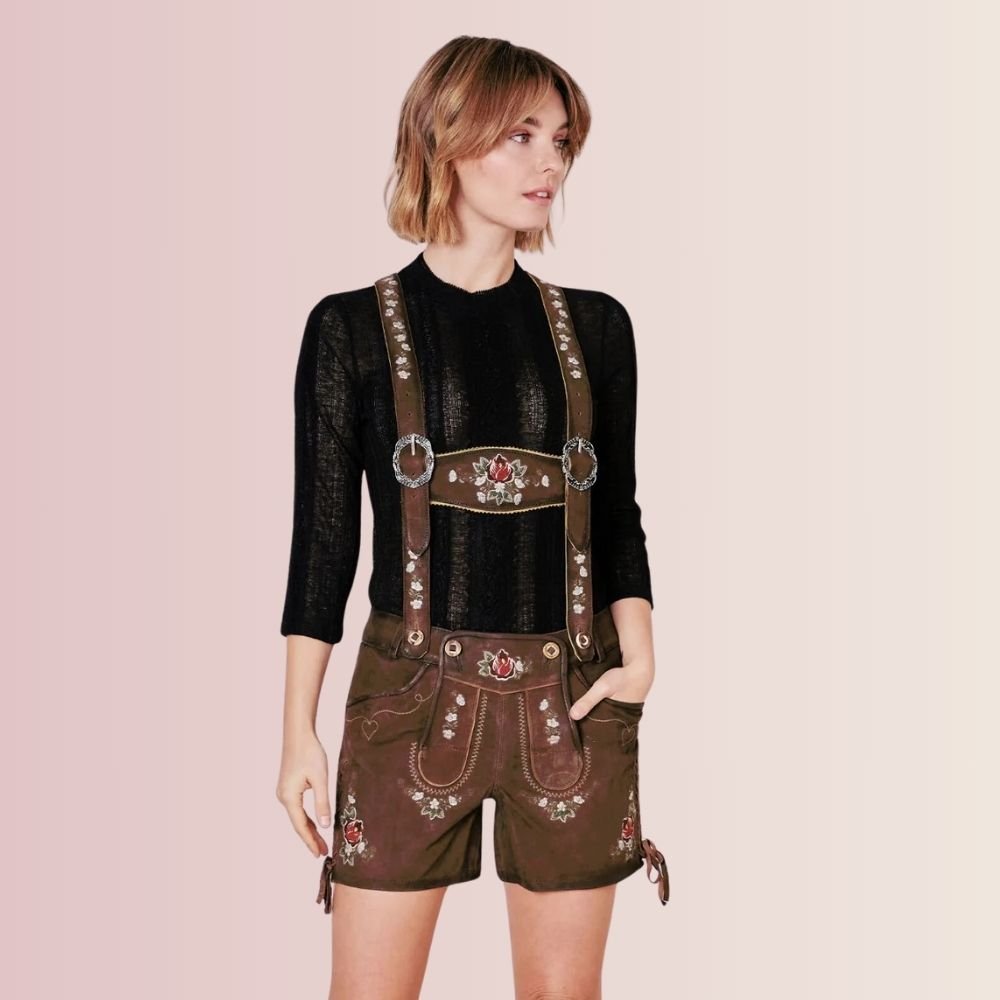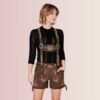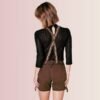German Traditional Wear: Heritage, Craftsmanship, and Modern Appeal
From the bustling beer tents of Oktoberfest to quaint Alpine villages, German traditional wear embodies the nation’s rich cultural identity. These garments, such as the iconic Dirndl and Lederhosen, are not just costumes—they’re symbols of regional pride, history, and artisanal craftsmanship. In this comprehensive guide, we’ll delve into the origins, styles, and contemporary relevance of traditional wear, perfect for enthusiasts, collectors, or anyone seeking to embrace Germany’s sartorial legacy.
What Is German Traditional Wear?
German traditional wear, known as Tracht, refers to historical garments worn across Germany’s diverse regions. Rooted in rural life, these outfits were designed for durability, practicality, and local identity. Today, Tracht is celebrated at festivals, weddings, and cultural events, blending tradition with modern fashion sensibilities.
Key pieces include:
- Dirndl: A women’s dress featuring a bodice, blouse, skirt, and apron.
- Lederhosen: Men’s leather breeches paired with suspenders and rustic shirts.
- Trachtenjacke: Embroidered wool jackets for colder climates.
- Accessories: Haferlschuhe (clunky shoes), Bollenhut (decorative hats), and woven stockings.
The History of German Traditional Wear
The evolution of German traditional wear spans centuries:
16th–18th Century: Rural Roots
Farmers, hunters, and laborers required sturdy clothing. Lederhosen (leather trousers) and simple linen dresses became staples. Regional variations emerged based on climate and materials.
19th Century: Romantic Nationalism
During Germany’s unification, Tracht became a symbol of cultural unity. Royals and elites adopted folk styles, elevating their status.
20th–21st Century: Global Recognition
Oktoberfest (founded in 1810) turned German traditional wear into a global phenomenon. Modern designers now fuse traditional elements with urban trends.
Iconic Pieces of German Traditional Wear
1. The Dirndl: Elegance in Every Stitch
The Dirndl is the pinnacle of women’s German traditional wear. Originally a maid’s uniform, it evolved into a fashionable outfit with:
- Fitted Bodice: Often embroidered with flowers or lace.
- Full Skirt: Knee-length for ease of movement.
- Apron: Colorful and tied to signal marital status (left=single, right=married).
Modern Dirndl styles range from classic to avant-garde, with shorter hemlines and bold patterns.
2. Lederhosen: Rugged Charm for Men
Lederhosen (literally “leather trousers”) are synonymous with Bavarian culture. Key features include:
- Durable Leather: Tanned deerskin or goat hide.
- Hosenträger: Embroidered suspenders.
- Latze: Decorative front flap with ornate buttons.
Paired with checkered shirts and Haferlschuhe, Lederhosen are perfect for festivals or countryside adventures.
3. Accessories: The Devil’s in the Details
- Bollenhut: A Black Forest hat with red pom-poms (unmarried women) or black pom-poms (married women).
- Wadenstutzen: Knitted wool socks for men.
- Charivari: Decorative chains worn with Lederhosen.
Regional Styles of German Traditional Wear
Germany’s federal structure birthed distinct Tracht styles:
Bavaria: The Heart of Oktoberfest Fashion
Bavarian German traditional wear is vibrant and elaborate. Think feathered hats, sky-blue Dirndl aprons, and Lederhosen with intricate stitching.
Black Forest: Dark Hues and Bold Contrasts
The Bollenhut hat and dark wool dresses define this region. Women’s outfits often feature puffed sleeves and silver jewelry.
Alpine Regions: Warmth Meets Function
Thick wool jackets, felt hats, and scarves dominate here. Men’s Trachtenjacke jackets are lined with horn buttons.
Northern Germany: Understated Elegance
Simpler designs with muted colors reflect the maritime climate. Women wear long skirts and shawls, while men don tailored wool coats.
German Traditional Wear in Modern Fashion
Tracht is no longer confined to festivals. Designers and influencers are reimagining German traditional wear for everyday wear:
- Dirndl Dresses: Slim-fit silhouettes, metallic fabrics, and mini lengths.
- Lederhosen Shorts: Urban-friendly designs for casual outings.
- Sustainable Tracht: Eco-conscious brands use organic cotton and recycled materials.
Luxury labels like Hugo Boss and Dolce & Gabbana have also incorporated Lederhosen and embroidery into runway collections.
Why Invest in Authentic Traditional Wear?
Purchasing genuine German traditional wear offers:
- Quality Craftsmanship: Hand-stitched embroidery and premium leather.
- Cultural Connection: Celebrate heritage at festivals or family gatherings.
- Timeless Style: Versatile pieces that transcend trends.
How to Style German Traditional Wear Today
For Oktoberfest
- Women: Pair a floral Dirndl with braided hair and ankle boots.
- Men: Combine Lederhosen with a checked shirt and Haferlschuhe.
For Everyday Wear
- Modernize a Dirndl skirt with a crop top and sneakers.
- Layer a Trachtenjacke over jeans for a rustic-chic look.
For Weddings
Opt for a white Dirndl with gold embroidery or a tailored Lederhosen suit in navy.
Where to Buy Authentic German Traditional Wear
1. Local German Boutiques
Visit shops in Munich, Nuremberg, or Baden-Baden for handcrafted Tracht.
2. Specialized Online Stores
- Bavarian Outfitters: Offers premium Dirndl and Lederhosen.
- Dirndl.com: Customizable designs for all body types.
- Trachten Rausch: Vintage-inspired pieces.
3. Markets and Festivals
Oktoberfest pop-ups and Christmas markets sell affordable options.
Caring for Your German Traditional Wear
- Leather Care: Condition Lederhosen annually to prevent cracking.
- Dirndl Preservation: Hand-wash bodices and air-dry skirts.
- Storage: Use breathable garment bags to protect embroidery.
Conclusion: Embrace Tradition with German Wear
German traditional wear is more than clothing—it’s a celebration of history, artistry, and community. Whether you’re dancing at Oktoberfest, attending a wedding, or adding a statement piece to your wardrobe, Dirndl dresses and Lederhosen offer timeless appeal. By choosing authentic Tracht, you support centuries-old craftsmanship while keeping Germany’s cultural legacy alive.
Explore our curated collection of traditional wear and find the perfect piece to honor your heritage or elevate your style. Prost to tradition!








Reviews
There are no reviews yet.